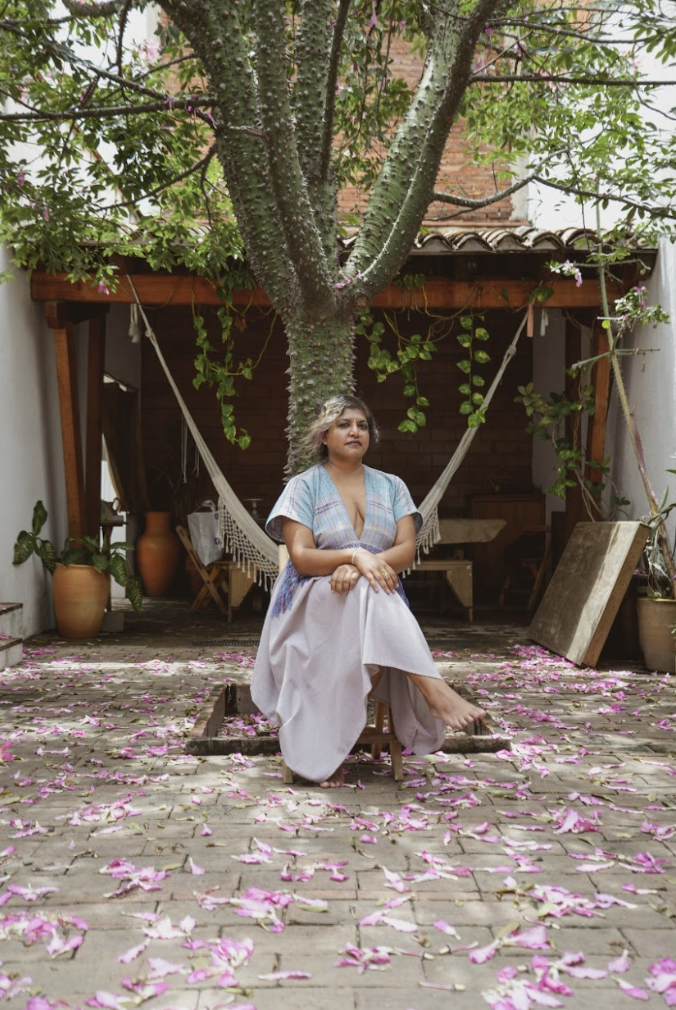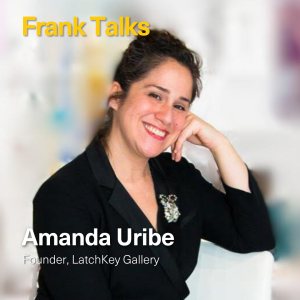Sheetal Prajapati is an educator, artist and advisor. Currently, she serves as the Executive Director at Common Field, a national arts organization supporting artists and art workers, and works as an arts advisor through her agency Lohar Projects, focusing on public engagement, special projects, artist development and organizational planning. Previously she worked at organizations including MoMA and Pioneer Works in New York and has taught in MFA programs for the School of Visual Arts (New York), Montclair State University (New Jersey), and Moore College of Art and Design (Pennsylvania). Sheetal received an MA in Arts Administration and Policy from the School of the Art Institute of Chicago and a BA from Northwestern University in History and Gender Studies.
What was the most important thing you learned at your first job in the Arts?
It’s hard to choose one lesson during your first year in the field as being more important than any other but one of the lasting lessons I learned during my 1st year working in the arts as a museum educator (overseeing programs), is the criticality of administrative work in everything we want to do. From fundraising and curating to programming, every creative endeavor or idea that comes to life is supported by critical organizing work. Whether its budgeting, marketing, grant writing, scheduling, or organizing information, I learned quickly that administration was central to getting things done.
It was during this year, I decided to seek out a masters program in art administration over art education (I was interested in working in museum/arts education) or art history as I had previously planned. Some of my advisors at the time suggested that an arts education or art history degree would serve me better over the course of my career but my instinct was telling me that I had the passion to read the books, go to the lectures, learn with others, see art, meet artists – what I needed was training in administration and organizing for cultural production to ensure I could bring ideas to life in any environment. To this day, I continue to be grateful for the choice I made 20 years ago. It has opened doors and opportunities for me that I never imagined!
Where were you raised and what is the arts community like there? How has your upbringing shaped what you do in the arts today?
I was raised in Owensboro, Kentucky – a small town situated on the Ohio River, bordering Indiana. My touchpoint to the arts growing up was dispersed and came partially through learning about my identity as Indian. My love of color I believe comes from early in my childhood – memories of my mother’s jeweled and brightly dyed saris, the rich red color of the powder we used for religious ceremonies, and images of Hindu deities around our home – all drawn or printed with ornate and flowing clothing, animals, food, and other symbols of their identity surrounding them (a overwhelming experience of color!).
I also have fond memories of being able to “say” something with the hands-on art experiences I had – through Girl Scouts, in the few art classes I had, and at our local art museum in town. Though art was never a huge part of my life or my parents growing up, in reflection, I see that learning about who I was ended up being an education and appreciation of a wide range of aesthetics.
I think sometimes this is why I was drawn to art education specifically. The visual narrative of my identity was the first way I understood myself as a person who held cultures within me. I have always believed that creativity and expression are essential to the human experience of connection and understanding. I still do the work today because of that.
Tell us more about your day-to-day role at Common Field. What is one thing you do every day that contributes to the organization’s success?
In my role as Executive Director, the way I spend my time can vary from hour to hour! I oversee our staff, program, budget and organizational administration. I move from finance meetings and program partner dialogs to considering the best ways to manage our team work each day. The one thing I do everyday is try to keep an eye on our horizon lines in all that we do – ensuring that all our parallel efforts are moving towards shared goals and values for the organization, our Network and our team.
What was the impetus behind founding Lohar Projects?
I founded Lohar Projects in 2019 after working in full-time various education and programming roles in arts organizations for 16 years. In New York, I was able to work both at the Museum of Modern Art as well as Pioneer Works in Brooklyn (multidisciplinary art space) overseeing programs for a range of audiences. Over time, I observed a gap between the organization’s stated values and goals and their practices internally. This isn’t uncommon but those misalignments had a negative effect on me – professionally and personally as a woman of color moving into increasing leadership roles. By 2018, I realized that I had a set of values and practices I wanted to enact within the art sector as an educator, curator, artist and administrator. I also wanted to work on other projects and try to bring together my experience across the field into a supportive advising practice – for artists but also for arts organizations. In my current role at Common Field, I work part-time in order to be able to continue my agency work as well. I realize that for me it’s important to be working in multiple ways – I learn so much and believe that each of these distinct roles from project to project allow me to bring a broader and practiced perspective to any client.
What is the best piece of advice you can give about working in the art world?
The best advice I can give you is to understand why you are here. What motivates you to work in this field? Why is it important to you? professionally and personally? Your motivations and goals will change over time and returning to this reflection throughout your career can help guide you towards the next thing or next place. Give yourself time and space to stay grounded in your beliefs and think of your career or work in the arts as a journey or process that unfolds over time.
What do you think defines a good employee? And what defines a good supervisor?
Being a good employee or supervisor means understanding your role and responsibilities, asking for the tools and resources you need to do your best, and staying open to learning new things from the people around you.
Often, I think employees and supervisors are seen as diametrically different but the reality is that we are all people and contributors. Each of us has a role to play in our organization’s work and without each other, our larger goals would be unachievable. I share this because as someone that has been on many sides (and in between) these assumed dichotomies, I see that many of us fall into the traps of those tropes because organizations might not know how to do things differently. Employees and supervisors make each other better in a healthy work environment and structure and I hope that more arts organizations will begin to consider the criticality of this in relation to supporting employees and supervisors to realize their potential.
What are you most excited for this year at your company or in the art world as a whole?
I am interested to see how the recent shifts in dialogs around the responsibility of arts organizations to consider representation internally and externally will develop in the coming years. It takes time for culture to shift and in the arts it feels like we are at an inflection point right now. How will organizations who are discussing this and trying to change enact these principles in practice? Will the experience and mobility of marginalized artists and art workers improve over time? What will be the larger outcomes for our arts culture, community and our shared history if we can move towards a more expansive, welcoming and supportive space for more people and ideas?
How do you think the art world can become more transparent?
Transparency seems to be a popular word or idea associated with arts organizations being more responsible in some way. What’s interesting about this is that transparency, in whatever way you choose to understand it, requires trust. The obvious issue is lack of knowledge or information shared that leads to problems like elitism, limited access and so on. What’s missing in this call for transparency is the work of building trust – how we make space within our organizations and with each other so we can share more, work more supportively and be vulnerable together.
Why are supervisors scared to share sensitive or bad news with their team? Why do employees withhold information that may impact their work from their supervisors? These fears or anxieties come from a lack of knowing and believing that you can bring your full self to your work without possible retribution, animosity, or other possible challenging outcomes. How can we alleviate this circumstance to allow for more openness?
For me, the path to transparency is through trust-building, and not the other way around.
What is the best exhibition you have seen recently?
I recently saw Poetic Justice: Judith F. Baca, Mildred Howard, and Jaune Quick-to See-Smith at the New Museum of Art in Santa Fe. It was powerful and introduced me to Jaune Quick-to-See-Smith’s incredible work.
If you could own work by 5 different artists, who would be in your collection?
Genesis Belanger
Louise Bourgeois
Bisa Butler
Frida Kahlo
Chitra Ganesh




